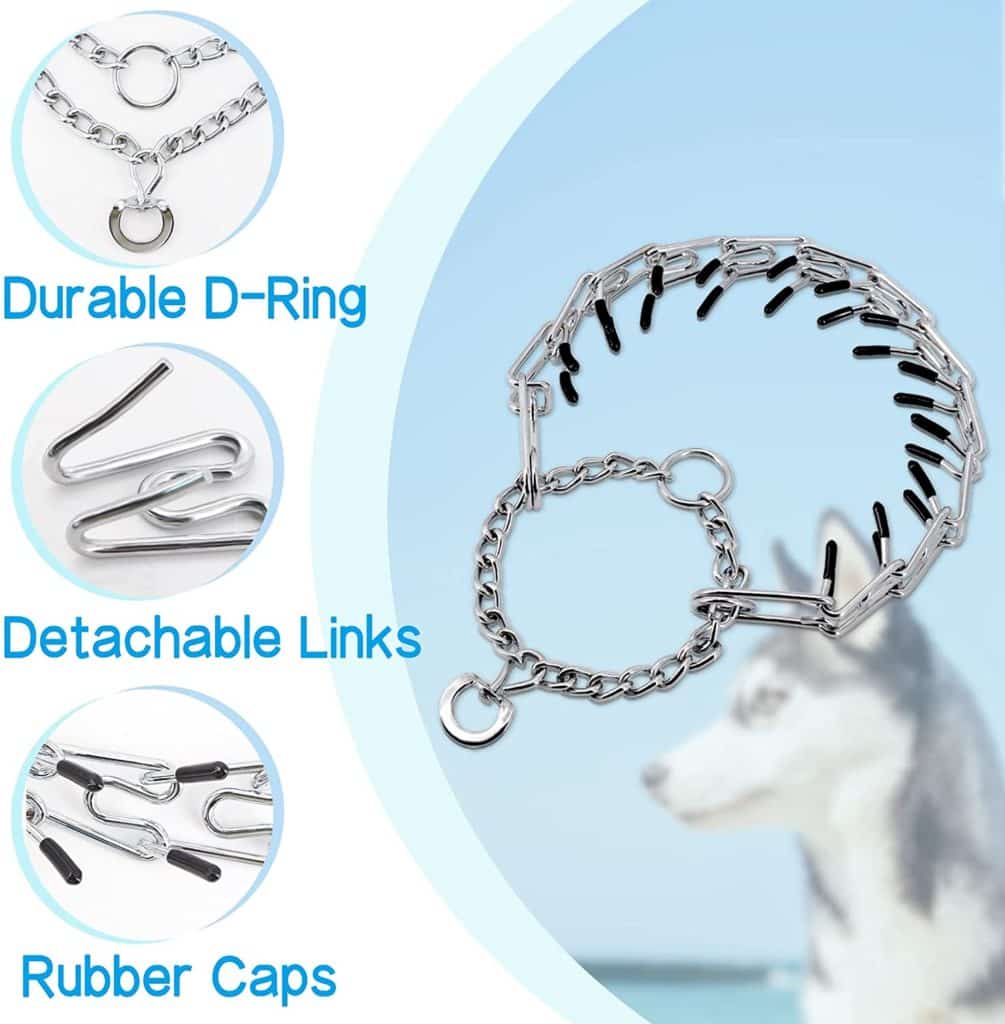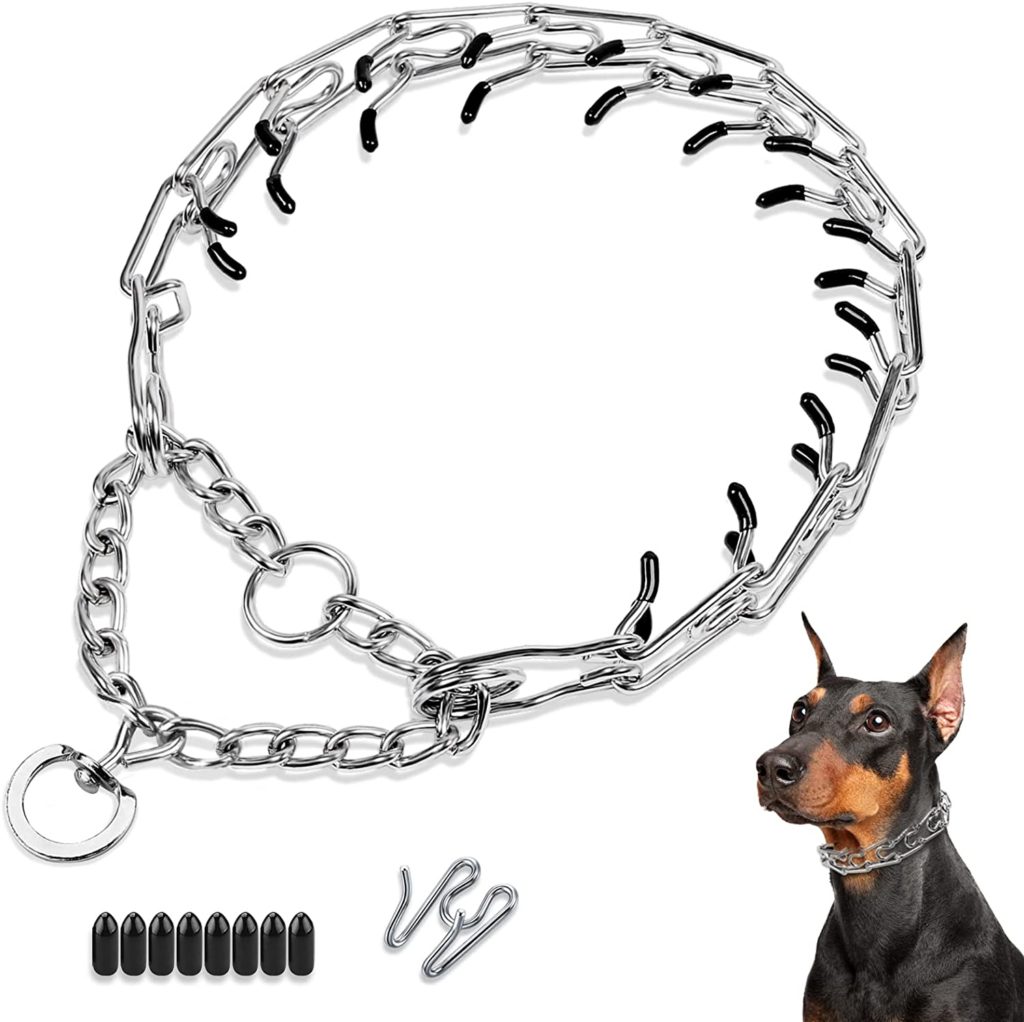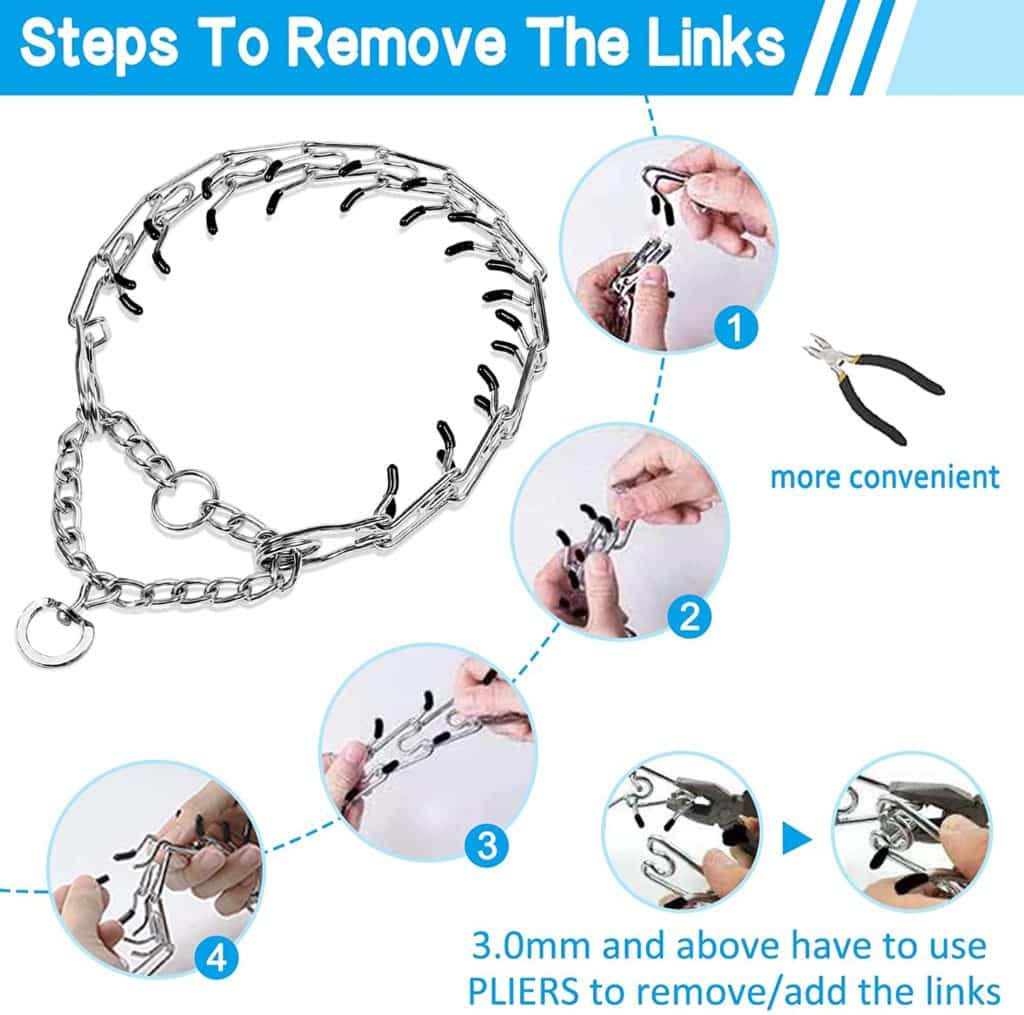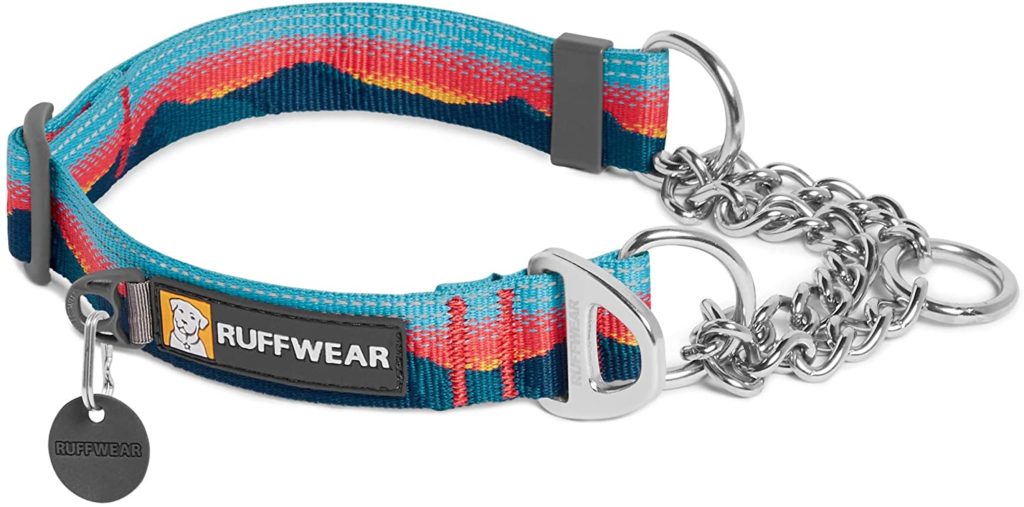Leash training Great Danes is a challenge but SO important.
Teaching your Great Dane to walk politely on a leash is an important skill that can reduce your risk of injury, and theirs too!

Does your Great Dane pull a lot, choke themselves on their leash and embarrass you in public?
You’ve come to the right place! Here are our top 5 tips for leash training your Great Dane!

1. CHOOSE THE RIGHT GEAR
When leash training your Great Dane, we recommend starting with a flat buckle or martingale collar and a quality leash. (More info on no-pull tools is offered later in the blog!).
Day Pouch Treat Bag Review
Is the Gentle Leader an Abusive Tool?
Things that are More Aversive Than an E Collar in Training
Dog Halo Collar Review
The Best Leashes for Great Danes
Martingale collars are escape proof and a great choice for dogs that easily back out of collars. (You can purchase beautiful, handmade martingale collars from Magnolia Mutts. She donates profits to Great Dane rescues).
The Best Collars for Great Danes
Or choose a 1.5-2.0″ wide collar, some of our favorites are below.
2. USE HIGH VALUE TREATS & LOTS OF PRAISE
One big reason so many people struggle with walking their Great Dane on a leash is that they haven’t put enough time yet into teaching the dog the correct behavior.
Positive reinforcement is the best way to teach the dog what you want: in this case, walking by your side!
You can practice rewarding your dog after just one step, then two, then five and so on until you are confidently walking down the block. Keep the leash loose in your hands and encourage your dog to interact with you! Don’t worry, like any training tool, the goal here is to completely fade out the use of the treats. Take it easy and gradually replace treats with praise over time.
Need a place to carry the treats? We LOVE this training bag on Amazon.
]
3. START IN A LOW DISTRACTION AREA
You can give your dog all the treats in the world, but it WILL NOT work if you are trying to train your dog when they are already distracted and pulling.
Why is Leash Training so Hard?
5 Leash Training Tips
Puppy Training: 5 Mistakes in Training
You must start your leash skills training indoors where the environment is predictable and boring.
Kind of like Kindergarten! Work at your dogs level and only approach college level requirements when your dog is actually ready for it. Thoroughly teach the ‘HEEL’ or ‘WITH ME’ commands so you can work your way up to doing those skills in a more distracting area. Set up an obstacle course in your house and practice loose leash walking around it!
4. KEEP PRACTICING
Work on your leash training skills for a few minutes each, several times per day both off-leash and on in your living room and fenced yard if you have one.

As your dog is better able to keep the leash loose and focus on you, offer lots of praise and work on this skill in a new (but still easy) area such as Home Depot (on a quiet day) or a quiet park. Remember, you can train your dog to ‘HEEL’ the same way you train any other trick. It’s just a game!
Make sure to allow your dog PLENTY of time to also sniff about and explore. This calm enrichment teaches them to be comfortable in the environment. Stay positive and aware of your surroundings AND your own behavior. Tension from you = tension from your dog.
5. LEARN ABOUT TRAINING TOOLS FOR GREAT DANES
Many people are curious about the best leash training tools for Great Danes. Here is our quick rundown on tools that can be used, but that must ALSO be paired with proper training mentioned above.


HEAD COLLAR
Head Collar: This popular tool relies on pressure to your dog’s face, making it very uncomfortable for the dog to pull. Many dogs find it to be aversive to wear and will paw at it, whine or even shut down. This option, if used, should be paired with diligent conditioning and training to prevent pulling in the first place, as a dog that lunges in a head collar can injure himself.
Head collars should never be used on dogs with entropion, cherry eye, poor structure (including incorrect head/neck/front assembly) or Wobblers. Contrary to popular belief, the ‘head collar’ or ‘gentle leader’ is not actually positive or gentle, and we believe that for most owners, this tool is not actually the best choice.
PRONG COLLAR
Prong Collar: This collar distributes pressure evenly around the dog’s neck. When used properly, a prong collar will not pop a balloon, and when applied to your arm will simply feel like pressure that goes away as soon as you release the tension.
They look scary but that doesn’t mean that they are. Prong collars are not aversive to wear, and with a few quick, positive conditioning exercises they become a cue to your dog to redirect and look at you for direction. The pressure, if needed, is safer and better for your dog than the pressure that they get when they pull wildly into a flat collar or harness.



When fit and used correctly, prong collars are a surprisingly gentle option, as they don’t rely on restrictions to movement or force. Many canine chiropractors advocate for prongs paired with positive reinforcement as the tool of choice, for a reason. We recommend working with a trainer, however. Jerking your dog around or purely relying on a prong collar to do the job is NOT how this tool works. Herm Sprenger brand is the only good choice.
NO PULL HARNESS
No-Pull Harness: No pull and front-clip harnesses rely on the same concept as prong collars and head collars; applying pressure that makes it uncomfortable to pull and rewarding to stop. No Pull Harnesses also alter the way a dog moves, may throw them off balance and will nearly always restrict the movement of the shoulders. We do not recommend the use of front clip harnesses such as ‘Easy Walk’ or ‘Petsafe’, and contrary to popular belief they are not a positive or dog-friendly option. The exception to harnesses may be an athletic fit y-front harness (shown below) with a front-clip, if necessary, and transition to back clip use.
CHAIN COLLAR
Chain Collar: Chain collars look cool, but they should not be used as a ‘necklace’. Trainers use them as an audible correction; they are not meant to choke the dog. The ‘zip’ of the chain sliding through the ring is enough to get most dogs attention, but it will not work if the dog is already pulling into the collar. We believe there are better choices, however for this option we recommend a martingale style chain (see below).

E COLLAR
E-Collar – the modern high-quality E-Collar, when used properly, is more humane and less aversive than any other training tool (including no-pull harness and head collar) listed above. They CAN be used for leash skills, too, but you have to do it right. Read more in our E-Collar training guide here: https://www.hellodanes.com/product/great-dane-e-collar-training-guide/
E Collar Training Guide
E Collar Myths
What is an E Collar?
What is the Difference Between an E Collar and a Shock Collar?
ALL tools can be used incorrectly and result in pain, fear and downright abuse. It’s up to you to learn about each tool before using it on your dog. Tread cautiously with marketing that is meant to make you believe that ‘nylon’ tools are positive and metal tools are abusive and punishing! It’s not that simple.
The information contained in this post is for informational purposes only. We do our best to present the most up-to-date research, however it is up to the reader to make decisions regarding the health and well-being of their dog. We make no claims here to prevent or treat bloat or any other condition related to Great Danes. Find a veterinarian with GIANT breed experience, and chat with them.
Some of the products we list on our website contain affiliate links. If you choose to make a purchase, we may receive a small commission for referring you. This commission does not affect the price of the product and is used to fund this website and our content.

Leave a Reply